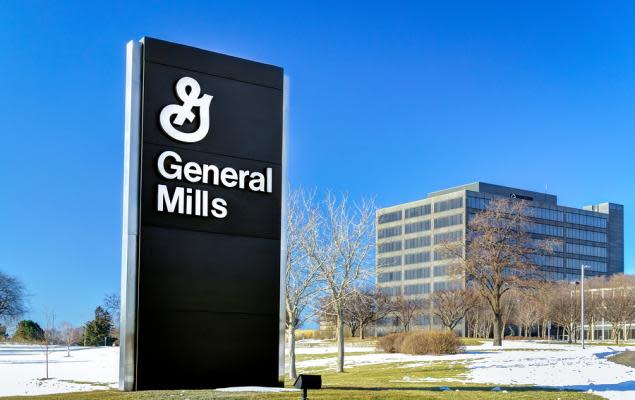General Mills (GIS) Accelerate Strategy Solid, Costs Inflated

General Mills, Inc. GIS has been benefiting from its Accelerate strategy and focus on key priorities. The company’s Pet segment has been doing well, in particular, due to the increased pet population and more humanization and premiumization of pet food. These factors, along with solid innovation, are likely to continue working well for General Mills amid the rising cost inflation.
What’s Working Well?
The Accelerate strategy, which was unveiled in February 2021, aids the company in making choices of how to win and where to play to boost profitability while enhancing shareholder returns in the long run. Under how to win, GIS is focused on four pillars that are designed to provide a competitive advantage. These include brand building, undertaking innovations, unleashing scale and maintaining business strength. The ‘where to play’ principle is outlined to enhance the company’s capabilities to generate profitability through geographic and product prioritization along with portfolio restructuring. This includes prioritizing investment, investing in five Global Platforms, driving growth in Local Gem brands and reshaping the portfolio.
In fiscal 2022, management announced or concluded seven transactions, including two buyouts and five divestitures, aimed at driving growth in the long run. However, the net effect of divestitures is likely to hurt profits in fiscal 2023.
For fiscal 2023, General Mills remains committed to the Accelerate strategy, underscored by its three priorities – competing efficiently through brand building, investing in Holistic Margin Management (“HMM”) and Strategic Revenue Management (“SRM”) initiatives to counter inflation, making other strategic business investments, staying committed to ESG goals and reshaping the portfolio. Management expects HMM cost savings to be 3-4% of the cost of goods sold in fiscal 2023.
General Mills’ Pet segment has been doing well. To this end, the company had acquired Blue Buffalo Pet Products, Inc. in fiscal 2018. The demand for the Blue Buffalo brand remained sturdy in the fourth quarter of fiscal 2022. Tyson Foods’ pet treats business acquisition also adds another leaf to General Mills’ impressive Pet platform. In the fourth quarter of fiscal 2022, revenues came in at $610.3 million in the Pet segment, up 37% year over year, due to solid pound volume growth and a positive net price realization and mix. Net sales included 15 points of gains from the pet treats business buyout (concluded on Jul 6, 2021). Organic sales increased 22% year over year.
Cost Woes Likely to Be Countered
In the fourth quarter of fiscal 2022, General Mills’ adjusted gross margin contracted 70 basis points (bps) to 33.8% due to a double-digit rise in input cost inflation, escalated other costs of goods sold and supply-chain woes. Cost inflation and supply-chain hurdles are anticipated to persist in fiscal 2023. For fiscal 2023, management anticipates a 14% rise in the cost of goods sold, mainly due to ingredients, logistics and packaging materials.
Several other food companies are encountering cost headwinds. Conagra Brands’ CAG adjusted gross margin contracted 147 bps to 24.9% in the fourth quarter of fiscal 2022, mainly due to the cost of goods sold inflation of 17.3%. Costs at CAG were particularly higher for commodities like chicken and pork, which are difficult to hedge. Conagra Brands expects the cost of goods sold inflation to linger in fiscal 2023.
Mondelez International MDLZ encountered increased raw material and transportation costs in the second quarter of 2022. This, together with an adverse mix, hurt MDLZ’s adjusted gross profit margin, which contracted 210 bps. Mondelez expects elevated cost of goods sold inflation in 2022.
Another company bearing the brunt of increased costs is B&G Foods BGS. The adjusted gross margin at BGS contracted from 24.1% to 16.5% in the second quarter of 2022 due to greater-than-anticipated input cost inflation. For fiscal 2022, B&G Foods expects to keep seeing significant cost inflation for inputs, such as ingredients, packaging, labor and transportation, due to factors like the pandemic, the Ukraine war, weather conditions, supply-chain hurdles and the shortage of labor.
Coming back to General Mills, the company remains on track with its HMM cost-saving efforts and pricing initiatives as part of its SRM capacity to counter inflation.
Want the latest recommendations from Zacks Investment Research? Today, you can download 7 Best Stocks for the Next 30 Days. Click to get this free report
General Mills, Inc. (GIS) : Free Stock Analysis Report
Conagra Brands (CAG) : Free Stock Analysis Report
B&G Foods, Inc. (BGS) : Free Stock Analysis Report
Mondelez International, Inc. (MDLZ) : Free Stock Analysis Report
To read this article on Zacks.com click here.
Zacks Investment Research

 Yahoo Finance
Yahoo Finance 